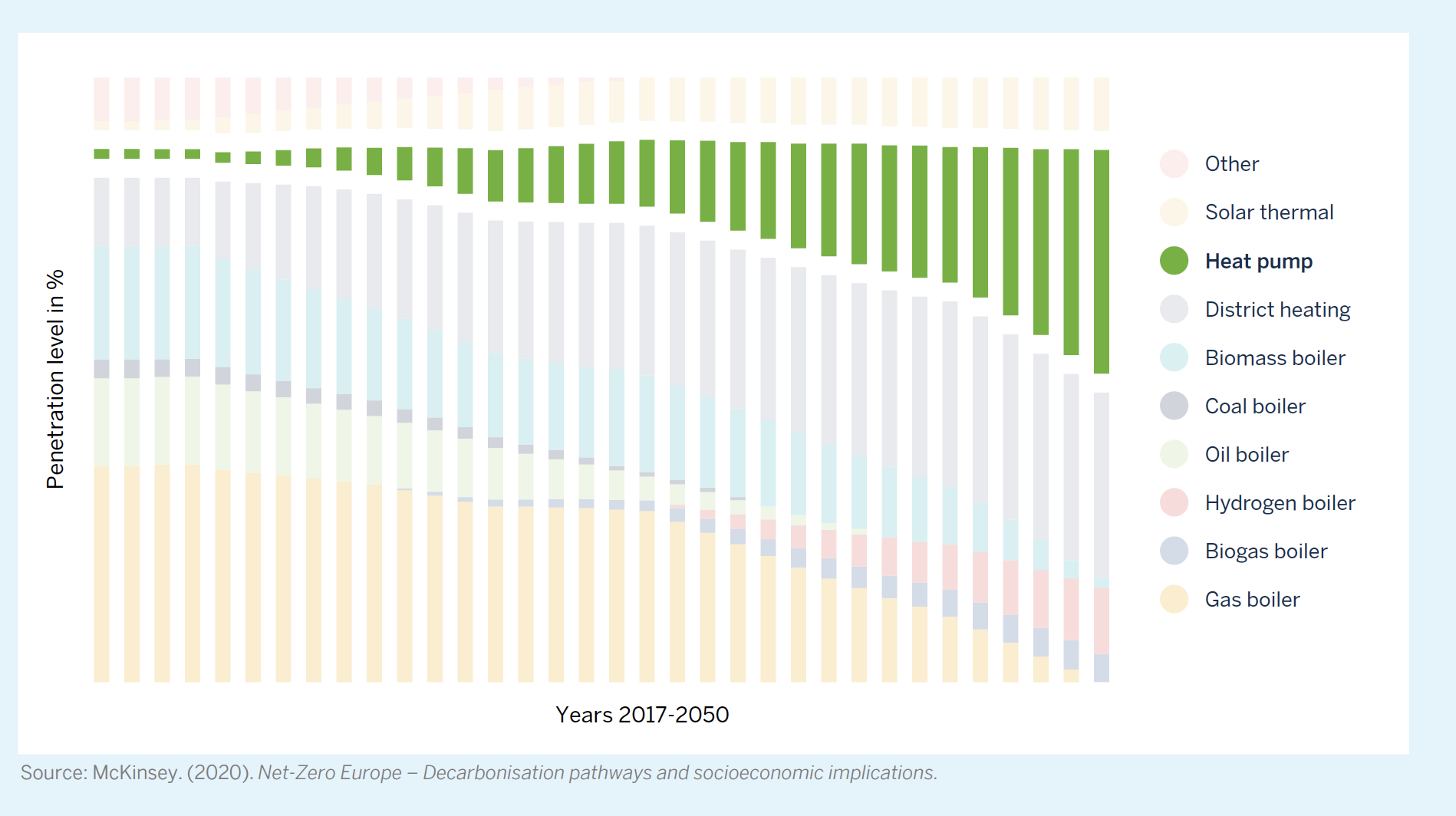The EU’s ‘RePowerEU’ plan aims to accelerate the rollout of heat pumps, including doubling the deployment rate in the next five years. Richard Lowes explains how it can be done.
In the past few weeks, European energy policy and its perception of fossil energy have seen a seismic shift. Heat pumps were always undoubtedly a critical heat decarbonisation technology, not just in Europe but around the world.
In addition to being vital for decarbonisation, heat pumps are seen as a critical technology for enhancing the EU’s energy security to reduce Russian gas imports. A new report from the Regulatory Assistance Project and its partners, ‘The perfect fit: Shaping the Fit for 55 package to drive a climate-compatible heat pump market’, explores how the EU’s Fit for 55 package can drive greater growth in heat pumps and how in the interim period, member states can drive action.
Why heat pumps?
While heat pumps use electricity, the heat that a heat pump moves into a building is inexhaustible energy from the environment (the air, the ground or water).
Heat pumps provide significantly more useful heat than the electricity used to power them, making them a cost-efficient technology for decarbonising space and water heating in buildings.
Even a heat pump running on electricity solely produced using fossil gas would reduce total gas use and greenhouse gas emissions. But as the share of low carbon electricity continues to grow across Europe in the coming decades, so will the gas savings and emissions reductions that heat pumps bring.
This combination of efficiency and ability to use low carbon electricity explains why heat pumps play a central role in the decarbonisation of heating in buildings, district heating networks and low-temperature industrial processes for numerous decarbonisation pathway studies, including work by the European Commission and the IEA.

Fit for 55 is a crucial heat pump policy moment
Many areas of the EU’s Fit for 55 package could, if advanced, support the growth of the EU’s heat pump market. A proposal in the Energy Efficiency Directive would disallow energy savings associated with fossil fuel boilers from counting towards the EU’s energy savings target, and a proposal in the Energy Performance of Building Directive (EPBD) would require member states to lay out plans for fossil fuel heating phase-outs by 2040. Both proposals would get member states to consider heat pumps in their medium- and long-term policy planning.
The revised Energy Taxation Directive and a new, second emissions trading system covering buildings can potentially shift the overall economics of heating away from fossil fuels towards heat pumps and should, in general, be supported.
Stronger minimum energy performance standards for existing buildings in the EPBD would ensure that the building stock is more efficient and better able to guarantee affordable and quick adoption of heat pumps at scale.
Time is of the essence
However, the Fit for 55 package will take time to be negotiated and will most likely not become law until 2024. The EU’s ‘RePowerEU’ plan aims to accelerate the rollout of heat pumps, including doubling the deployment rate in the next five years. Achieving this accelerated pace of change will require significantly more action by member states ahead of the introduction of the EU’s new legislation.
Fossil fuel heat bans are an obvious and key policy measure. New home fossil fuel heating bans can be introduced rapidly in advance of the EU 2030 target. To expand gas infrastructure in the face of a climate and gas crisis is clearly witless. This is hardly a new policy, with a number of countries, including the Netherlands and Denmark, already moving to ban gas in new buildings.
Furthermore, strengthening the European Commission’s proposal for new energy labelling and eco-design standards for space and water heating appliances alongside the Fit for 55 packages would be another important step — it would avoid the sales of new, less efficient gas condensing boilers on the EU market. This minimum energy performance standard should be combined with fossil heating bans with sensible lead-in times, an ultimate policy goal that should be clearly reflected in the EPBD.
In the interim period before the proposals become EU law, and likely for the foreseeable future, national governments should ensure they offer financial support for households to purchase heat pumps, with grants being a simple, tried and tested option.
More is needed
The transformation to low carbon heating by 2050 was already going to be a challenge. In addition to the heat pump policy measures currently proposed, thorough coordination of heat decarbonisation from international to local levels is needed. Such coordination needs to consider how building energy efficiency renovations happen alongside the rollout of heat pumps and more local developments around district heating networks.
There is a huge amount to do and very little time. The Russian war against Ukraine and the surrounding gas crisis adds a shorter-term imperative, which has focused minds on the future of heating.
The challenge now is to rapidly deliver policies at a national level that drive immediate change while ensuring that a robust Fit for 55 packages is agreed upon to provide a structural shift away from fossil fuel heating into the future. Undoubtedly, we should have started this earlier. But now more than ever, there is no time like the present to act, and our report can be a useful guide for policymakers.
This article previously appeared in Euractiv.

